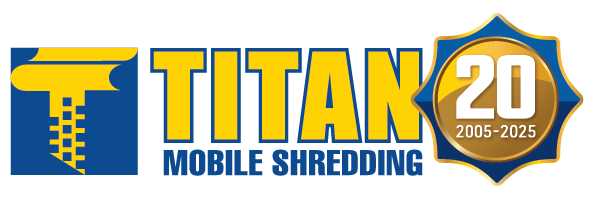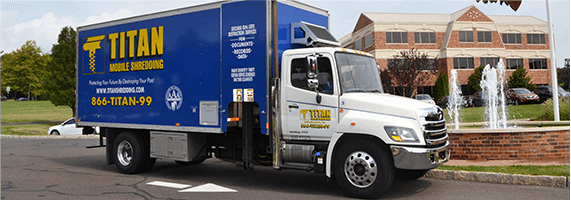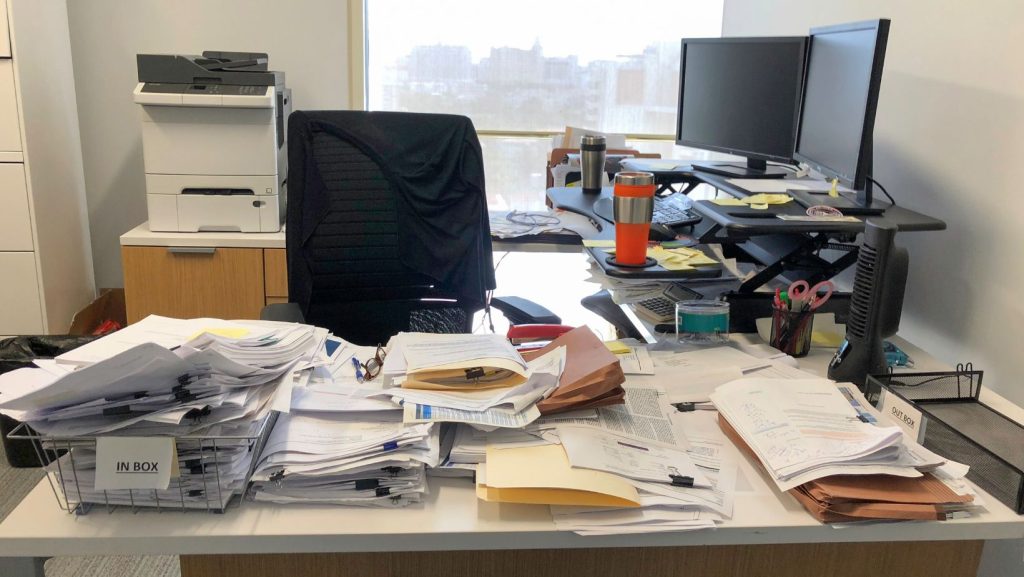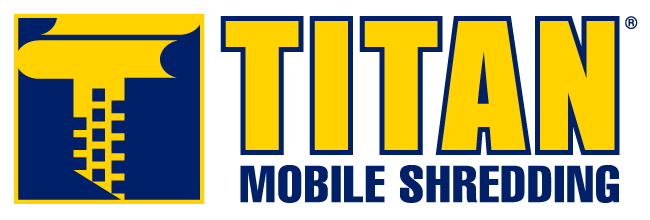Piles of papers cluttering your workspace? They might be doing more than just creating visual chaos—they could be hiding a minefield of sensitive information just waiting to compromise your data security. Forgotten files, unnoticed printouts, and mismanaged records can lead to unnecessary risks, including compliance violations or data breaches.
Conducting a thorough office audit is the first step to securing your documents and safeguarding your business. This guide will take you through a practical room-by-room checklist, ensuring no sensitive document goes unnoticed. Plus, you’ll learn how professional shredding services can offer a secure and efficient disposal solution, as well as long-term protection through scheduled shredding.
The Forgotten Pile-up: Where Sensitive Documents Hide
Sensitive documents often hide in plain sight, overlooked during the rhythm of a busy workweek. An office audit ensures no file, note, or record slips through the cracks. Below is a comprehensive checklist, broken down by common problem areas.
Room-by-Room Checklist
Desks and Drawers
Start at employee workstations, as desks and drawers are common hiding spots for sensitive documents.
- Check desktop surfaces and beneath piles of papers for reports, post-it notes, or printouts with confidential details.
- Look through desk organizers and employee inboxes.
- Inspect drawers—pay special attention to those used for “temporary” storage. Forgotten contracts, customer data, or old records may be buried there.
Printers and Copiers
Printers and copiers are notorious for hosting sensitive information.
- Empty uncollected printouts from printer trays. Employees often forget to retrieve their documents, leaving confidential information out in the open.
- Investigate copier hard drives, which may store scanned images of sensitive documents. These machines often retain residual digital records that could be exploited if neglected.
File Rooms
One of the most obvious, yet commonly overlooked areas, is the file room.
- Leaf through filing cabinets to identify outdated or duplicate files that no longer belong there.
- Keep your company’s document retention policy in mind. Anything exceeding that policy should be earmarked for disposal.
Storage Closets
Outdated files have a tendency to gather dust in storage closets, out of sight and out of mind.
- Examine shelves, boxes, binders, and old folders tucked away in storage.
Digital Files
Outdated or unnecessary information isn’t limited to physical storage spaces—digital clutter can also hinder efficiency.
- Review shared drives, cloud storage, and personal folders for redundant or obsolete files.
- Delete duplicates or irrelevant materials that no longer support current projects or goals.
Reception
The reception area can be a hotspot for overlooked documents.
- Check for visitor sign-in sheets, delivery logs, or uncollected mail containing personal or sensitive details.
- Inspect information packets, brochures, or schedules that might contain internal or confidential data.
Meeting Rooms and Conference Rooms
High-traffic meeting spaces often accumulate forgotten files.
- Look on tabletops, inside presentation folders, and in drawers for printouts or notes left behind after meetings.
- Remove old agendas, whiteboard notes, and handouts that contain project details or client information.
Mailroom
Mailrooms are busy hubs where documents can slip through the cracks.
- Review undelivered or returned mail, outdated shipping records, and packing slips to ensure they don’t contain sensitive information.
- Review storage cabinets or bins for outdated invoices, statements, or confidential correspondence.
HR and Payroll Offices
HR and payroll areas are packed with confidential information.
- Audit file cabinets and desktops for outdated employee records, payroll summaries, or benefits paperwork.
Don’t Just Trash It—Shred It!
Once your office audit is complete, the question becomes, “What do I do with these outdated documents?” Simply throwing them in the trash isn’t enough. To eliminate the risk of sensitive information falling into the wrong hands, consider professional shredding services.
Why Choose Professional Shredding?
Unmatched Security
Professional shredding ensures that documents are destroyed beyond recovery, shielding businesses from accidental leaks or malicious breaches. It’s a non-negotiable step for maintaining document security.
Regulation Compliance
Many industries need to meet strict regulatory standards for data security. Professional shredding services not only ensure compliance but often provide a certificate of destruction, documenting secure and compliant disposal.
Efficiency
A one-time shredding service offers the most practical way to clear large volumes of documents. This eliminates the hassle of shredding in-house, saving your business valuable time and resources.
Scheduled Shredding for Long-Term Peace of Mind
For ongoing security, scheduled shredding services offer a consistent solution. With regular pickups, they prevent clutter from piling up and ensure you’re always on top of data security.
- Reduce risks by disposing of outdated materials year-round.
- Streamline your office environment, keeping it clear of unnecessary paper clutter.
- Stay effortlessly compliant with data protection standards.
Scheduled shredding isn’t just about convenience—it’s about creating a culture of data security within your organization.
Conclusion
Auditing your office for forgotten documents doesn’t have to be overwhelming. By inspecting desks, drawers, file rooms, and storage spaces, you’ll uncover sensitive files that represent potential risks.
But uncovering them is only step one. Professional shredding provides an essential layer of protection when you’re ready to dispose of these documents. For ongoing security and a clutter-free office, scheduled shredding services are the key to long-term peace of mind.
Contact TITAN Mobile Shredding today to explore our professional shredding and scheduled shredding services for a safer tomorrow.




